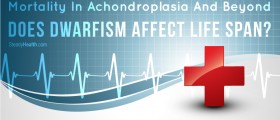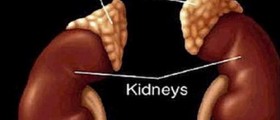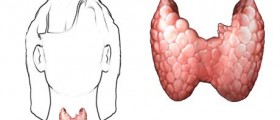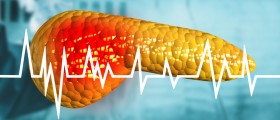Dwarfism is a medical condition that manifests as a short stature. Dwarfism is frequently defined as having an adult height of less than 4 feet and 10 inches, the metric equivalent of which would be 147 cm.
Dwarfism is actually an umbrella term that covers around 400 different medical conditions. Signs and symptoms of these conditions can vary severely, and the most common type of dwarfism is known as achondroplasia. It can be proportionate, in which the person has bodily proportions that match those of other people, or disproportionate, where some parts of the body can be unusually short in proportion to the rest of the body.
Achondroplasia is actually responsible for about 70 percent of dwarfism cases, and people who have this condition are usually recognized by limbs that are proportionally shorter than their trunk, larger head and typical facial features.
Causes of Dwarfism
Dwarfism is sometimes caused by a congenital disease or a genetic disorder, but it may also occur as a natural consequence of person’s genetics. The majority of cases of dwarfism (short stature) result form achonroplasia and growth hormone deficiency.
Achondroplasia is an autosomal dominant disorder caused by a faulty allele in the patient’s genome. These patients actually have problems with an inhibitor that regulates bone growth. The defect is most frequently inherited from the father, especially if the father is older than 35. However, many parents who have a child with achondroplasia do not carry the genes for the condition, in which case it results from a spontaneous genetic mutation.
Growth hormone deficiency may also be responsible for someone’s dwarfism. This medical condition occurs when the body doesn’t make sufficient amounts of growth hormone. Growth hormone is one of the key hormones in the body, as it stimulates growth as well as the reproduction of cells.
Dwarfism: What is the life expectancy of people of short stature?
In most cases, people affected with dwarfism will have a normal lifespan. In contrast to some prejudices someone may have, individuals of short stature usually have perfectly normal intelligence and can live healthy and independent lives, just like any other individual would.
In some rare cases, a patient’s intelligence may be affected due to the complications associated with hydrocephalus or other central nervous system disorders. The life span of these patients is normal if there are no serious complications associated with the disease. In general, these people may live approximately 10 years less than the general population.
However, children affected with Homozygous achondroplasia are usually either stillborn or die shortly after birth. This condition is associated with severe respiratory distress caused by rib-cage malformation and deformity. Even though their intelligence and lifespan are usually normal, people affected with dwarfism are usually suffering from a lack of muscle mass (known as hypotonia) and they are facing a lot of challenges in their lives. This is a highly visible condition and it often carries many negative connotations in the society. People with dwarfism are dealing with a lot of stereotypes in their daily life, and they are constantly fighting against discrimination. However, there are a lot of support groups and institutions in a mission to improve the quality of life for Little People, and remove all social barriers, myths and false negative stereotypes about them.

















Your thoughts on this
Loading...